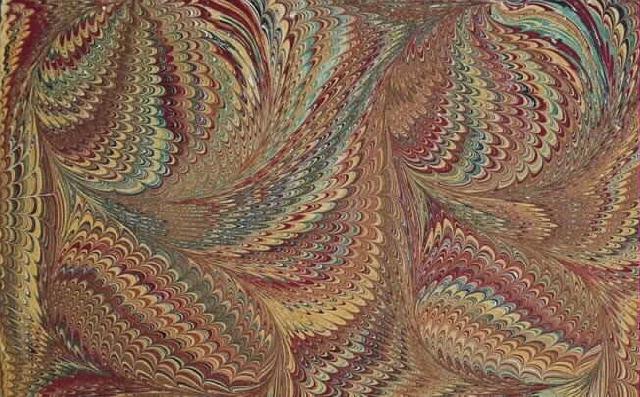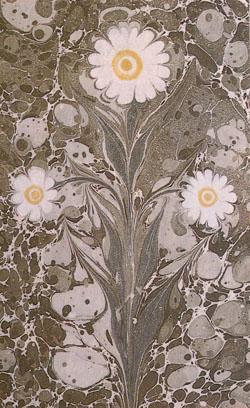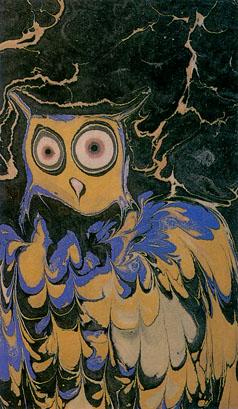



The word marbling is in Turkish EBRU (cloud, cloudy) or abru (Water face) (En Français. It is derived from the word ebre which belongs to one of the older Central Asian languages and it means the "moiré, veined fabric, paper etc..." used for covering some manuscripts and other holy books. Its origin might ultimately hark back to China, where a document from the T'ang dynasty (618-907) mentions a process of coloring paper on water with five hues. Through the Silk Road this art came first to Iran and picked up the name Ebru. Subsequently this art moved towards Anatolia. Specimens of marbled paper in the Turkish museum and private collections date back as far as the 15th century but unfortunately there is no evidence to show at what date the art of marbling paper first appeared in Anatolia. Around the end of 16th century tradesmen, diplomats and travelers coming to Anatolia brought this art to Europe and after the 1550s, booklovers in Europe prized Ebru which came to be known as "Turkish Paper Turkish marbled paper making". After then it was broadly used in Italy, Germany, France and England.
There is agreement amongst scholars that the so-called Turkish Papers has a colourful influence on the book arts of Europe. In the early examples from the 16th century in the Ottoman-Turkish era, Ebru appears in the battal (large) form, namely without any manipulation. Ebru technique consists of sprinkling colors containing a few drops of ox-gall on to the surface of the bath of water mixed with with kitre (gum tragacanth) in a trough. By carefully laying the paper over the bath, the floating picture on top of it is readily transferred to the paper thus, each Ebru is a unique print. To obtain beautiful Ebru results, one needs to have a light hand, refined taste and an open mind to the unexpected patterns forming on the water. Patience and a good knowledge of traditional culture are characteristic of Ebru masters. Since the art of marbling had a significant importance in Islamic art, it is essential to recall the basic principles of Islamic art in order to have a better and closer look at marbling and thereby reach a deeper understanding. Ottomans tried to express the beauty of the divine in all branches of art. We see them seeking to illustrate mystical beauties in architecture, music and ornamental art. During the 14th to 19th centuries many religious schools, especially Sufi sects, became a kind of "Art Workshop" educating students by a master to apprentice method. Due to the modesty encouraged by dervish precepts many works of art even had no signature on them.


No comments:
Post a Comment